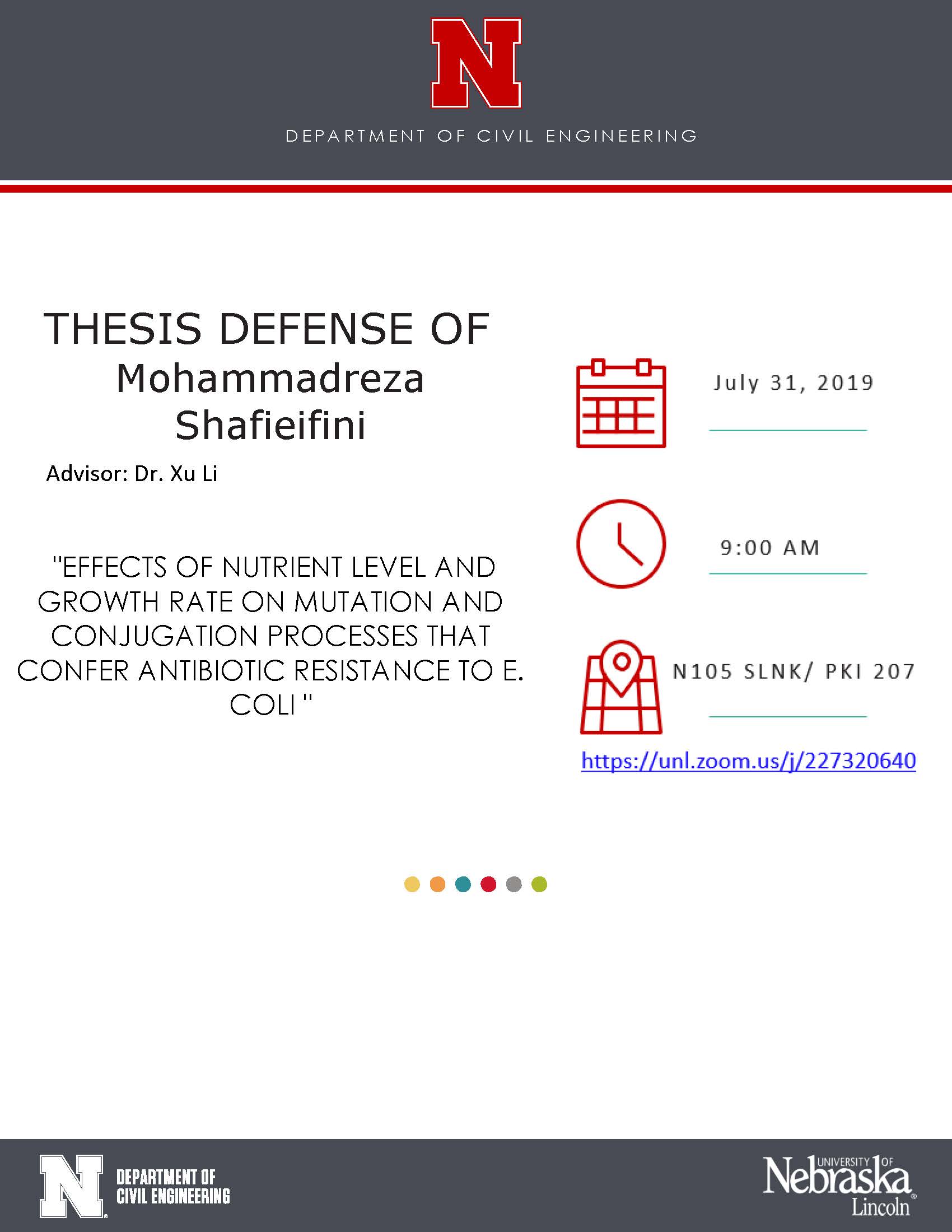
Antibiotic resistance genes (ARGs) may enter surface water with the discharge of treated wastewater. Conjugation is a main mechanism for the horizontal gene transfer of ARGs from wastewater microbiome to the microbiome indigenous to surface water. However, little is known about how environmental factors affect the conjugation process of ARGs. In this thesis, an extensive research related to spreading antibiotic resistance genes in the environment is reported. The project investigated how environmental parameters may affect the rate of dissemination of ARGs and in what extent the resistance level of the population is changed after mutation and conjugation event. The chemostatreactors were built to simulate surface water receiving wastewater effluent. Two E. coli strains, CV601 and J53, were used as donor and recipient cells, respectively. First, CV601 cells received plasmids from an activated sludge sample through filter mating and became resistant to tetracycline. Then, J53 cells (i.e., to simulate river microbes) were established in chemostatsbefore CV601 cells (i.e., to simulate wastewater microbes) were introduced. Two nutrient levels (3×and 10×diluted Muller Hinton broth) and two growth rates (0.15 and 0.45 hr-1) were included. Results show that regardless the nutrient level, the conjugation frequency was 10-2and 10-6for the high and low growth rate, respectively. The minimum inhibitory concentration (MIC) of the recipient cells increased from 2 to 64-128 mg/L after the conjugation test, which was 2 to 4 fold lower than donor for the same plasmid. In addition, recipient cells grown under 0.45 hr-1and 1/10 MHB showed MIC increased from 2 to 8 mg/L in mutation experiment. Whole genome sequencing was conducted to 1) prove the presence of tetracycline resistant plasmid in donor; 2) check the transferability of the plasmid to recipient cells; 3) and confirm the emergence of mutants in recipient cells. This study aims to investigate a public health problem at the interface of the built and the natural environments. The results will allow us to better model and predict the proliferation of ARGs in the environment.
More details at: https://www.facebook.com/events/1802790373156718/